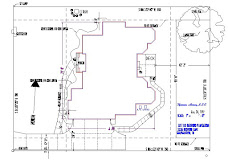Passive Solar Greenhouse
My self-designed and self-built home in the Colorado mountains included a passive solar Trombe wall in a south-facing solar greenhouse made from decomposed granite stones gathered off the site. I was green before green was cool. The paver flooring also provided solar storage. The house was cut into the hill on its north side for a natural earth berm and had small high windows on that side for energy conservation. Very little of the two acre site and vegetation was disturbed during construction, involving only the house foot print, gravel driveway, and septic field. No soil was imported and the cut to create the berm against the north wall provided just enough fill to support the front of the home. The south side windows had overhanging eaves, which length was calculated to allow sun to enter in winter and not in summer. A concrete slab floor contributed to the thermal mass and resultant moderation of temperature swings.
The climate and south slope location were well suited to passive solar techniques, and these expenditures were able to payback in a reasonable amount of time in the mid 1980’s. These design elements worked very well to moderate the daily temperature swings through the seasons. In addition I used inexpensive electric baseboard space heating that was easily zoned in each room, and an electric demand load shedder could automatically turn off heat in a little-used area or the electric water heater or well pump. We gathered and cut our own dead firewood frequently for a cast iron wood stove used on the coldest nights. My window coverings were panels of foil-faced urethane (later fabric covered) left over from the unused wall sheathing.
Ventilated operable skylights in the ceiling furnished summer cooling from the chimney effect. No mechanical air conditioning was required at 7400 feet above sea level, and the roof overhangs were dimensioned to optimize the resulting shade in summer as well as the solar gain from the lower winter sun altitude angle.
This home design saved a lot of money on utilities and was comfortable in spite of a high heating degree-day location at the 7,800-foot elevation -see photo left. The utility bills with an all-electric, passive solar home were flat and constant throughout the winter months (consistently at $100 per month for 2400 sq ft. when others were $300 to $400.) The nation became more interested in conservation of energy in the late 1970’s and early 1980’s, following President Nixon’s government price controls on oil in 1973 which led to price increases and an oil crisis, as well as President Carter’s shortages of gas and long lines at the pump in 1979.
To preview the book that Geoff wrote click the following link then click the popdown URL; you will be asked whether to redirect to the Amazon.com website, click the URL on that page to open the book listing:
Click here for redirection link to the Amazon book
 |
| passive solar greenhouse at 7500 ft elev. Town of Boulder in back. |
The climate and south slope location were well suited to passive solar techniques, and these expenditures were able to payback in a reasonable amount of time in the mid 1980’s. These design elements worked very well to moderate the daily temperature swings through the seasons. In addition I used inexpensive electric baseboard space heating that was easily zoned in each room, and an electric demand load shedder could automatically turn off heat in a little-used area or the electric water heater or well pump. We gathered and cut our own dead firewood frequently for a cast iron wood stove used on the coldest nights. My window coverings were panels of foil-faced urethane (later fabric covered) left over from the unused wall sheathing.
Ventilated operable skylights in the ceiling furnished summer cooling from the chimney effect. No mechanical air conditioning was required at 7400 feet above sea level, and the roof overhangs were dimensioned to optimize the resulting shade in summer as well as the solar gain from the lower winter sun altitude angle.
This home design saved a lot of money on utilities and was comfortable in spite of a high heating degree-day location at the 7,800-foot elevation -see photo left. The utility bills with an all-electric, passive solar home were flat and constant throughout the winter months (consistently at $100 per month for 2400 sq ft. when others were $300 to $400.) The nation became more interested in conservation of energy in the late 1970’s and early 1980’s, following President Nixon’s government price controls on oil in 1973 which led to price increases and an oil crisis, as well as President Carter’s shortages of gas and long lines at the pump in 1979.
To preview the book that Geoff wrote click the following link then click the popdown URL; you will be asked whether to redirect to the Amazon.com website, click the URL on that page to open the book listing:
Click here for redirection link to the Amazon book
To order the 306 page book see above









